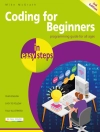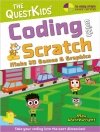Wouldn’t it be a waste to go on a spectacular, exotic
vacation abroad and just hang out at the hotel pool? Wouldn’t
it be a waste to buy a new i Pod, download four favorite songs, and
play them over and over?
Most people with Office 2003 are wasting a lot of software power
and a lot of time. They do the same routine things in the same
routine ways and haven’t begun to explore the capabilities of
Office 2003. If you’re one of them, Office 2003 Timesaving
Techniques For Dummies gets you out of your rut and into
action. It provides over 70 timesaving techniques for Word, Excel,
Access, Outlook, and Power Point. (Most of the tips work with Office
2000 and Office XP, too.) You’ll customize Office to meet
your needs and start working like a pro in no time with easy-to-use
tricks, tips, and techniques for:
* Streamlining your toolbars (Word alone has dozens to choose
from)
* Setting up Outlook, searching with folders, organizing with
flags, and dealing with spam
* Taking proper security measures, including using and updating
an antivirus package and avoiding potentially dangerous file
extensions
* Editing and laying out impressive Word documents
* Using keyboard shortcuts
* Diving into more advanced Office skills such as writing macros,
setting up templates, and using multimedia with Power Point
* Using Excel to build self-verifying spreadsheets
* Running totals and subtotals in Access
* Combining applications to print holiday greetings and run an
electronic newsletter
Written by Woody Leonhard, author of Windows XP Timesaving
Techniques For Dummies and the bestseller Windows XP
All-in-One Desk Reference For Dummies, this guides helps you
eliminate extra steps and little annoyances and do things
you probably didn’t know you could do, such as:
* Building e-mail stationery
* Calculating sales tax with the Lookup Wizard
* Making professional labels
* Encrypting messages
* Recording narration for Power Point presentations
Complete with an index that lets you find what you want,
fast. Office 2003 Timesaving Techniques For Dummies
helps you get up to speed and down to work. After all, times
a-wastin!
Mục lục
Introduction.
Part I: Knocking Office Into Shape.
Technique 1: Making Windows Safe for Office.
Technique 2: Launching Office Quickly.
Technique 3: Organizing My Documents for Speed.
Technique 4: Drilling Down with the My Places Bar.
Technique 5: Backing Up Quickly and Effectively.
Technique 6: Keeping Office Up-to-Date.
Technique 7: Disabling Automatic Hyperlinks.
Technique 8: Digging with Research –Quickly.
Technique 9: Copying and Pasting in a Nonce.
Technique 10: Keying Combinations Quickly.
Technique 11: Drawing Quickly.
Technique 12: Shrinking Graphics.
Technique 13: Modifying Toolbars.
Technique 14: Getting Help.
Part II: Saving Time with Word.
Technique 15: Getting Word Settings Right.
Technique 16: Changing Your Normal Template.
Technique 17: Laying Out a Page — Quickly.
Technique 18: Making Professional Labels.
Technique 19: Editing Like a Pro.
Technique 20: Finding and Replacing in the Wild.
Technique 21: Rapid-Fire Styles.
Technique 22: Fast Links inside Documents.
Technique 23: Setting Up Your Own Letterhead.
Technique 24: Positioning Pictures Just Right.
Technique 25: Typing Fractions Fast.
Part III: Streamlining Outlook.
Technique 26: Getting Outlook Settings Right.
Technique 27: Searching with Folders.
Technique 28: Organizing with Flags.
Technique 29: Taming Auto Complete in Outlook.
Technique 30: Dealing with Spam.
Technique 31: Preventing Infection.
Technique 32: Working with E-mail Attachments.
Technique 33: Securing Your Mail.
Part IV: Exploiting Excel.
Technique 34: Getting Excel Settings Right.
Technique 35: Building Self-Verifying Spreadsheets.
Technique 36: Freezing Columns and Rows.
Technique 37: Ripping through Lists.
Technique 38: Running Subtotals.
Technique 39: Creating Custom Auto Fill Series.
Technique 40: Grabbing the Best with Pivot Tables.
Technique 41: Creating Pivot Charts That Work Right.
Technique 42: Setting Scenarios and Seeking Goals.
Technique 43: Using the Lookup Wizard.
Part V: Pushing Power Point.
Technique 44: Getting Power Point Settings Right.
Technique 45: Choosing the Right Power Point File Type.
Technique 46: Changing Your Blank Presentation.
Technique 47: Recording a Sound Track.
Technique 48: Making a Presentation Run Itself.
Technique 49: Answering Predictable Questions.
Technique 50: Building toward a Goal.
Technique 51: Tripping the Light Fantastic with Multimedia.
Technique 52: Taking a Presentation on the Road.
Part VI: Assimilating Access.
Technique 53: Getting Access Settings Right.
Technique 54: Adding a Cover Sheet to an Access Report.
Technique 55: Including Totals in an Access Report.
Technique 56: Printing Labels in Access.
Technique 57: Reducing Repetitive Formatting Tasks.
Technique 58: Recycling Forms for Browsing and Data Entry.
Technique 59: Creating Your Own Auto Format.
Part VII: Combining the Applications.
Technique 60: Inserting a Spreadsheet in a Document.
Technique 61: Managing an Electronic Newsletter.
Technique 62: Turning a Word Document Into a Presentation.
Technique 63: Animating a Chart in Power Point.
Technique 64: Rotating Text in a Word Document.
Part VIII: The Scary (Or Fun!) Stuff.
Technique 65: Taking Over Word’s Show/Hide.
Technique 66: Inserting Unformatted Text in Word.
Technique 67: Inserting Unformatted Text in Excel.
Technique 68: Printing a Bunch of Spreadsheets — Fast.
Technique 69: Protecting Your Privacy.
Technique 70: Printing Personalized Greetings in Batches.
Technique 71: Creating Versatile Watermarks.
Technique 72: Building (And Stealing) E-mail Stationery.
Index.
Giới thiệu về tác giả
Woody Leonhard is a bestselling technology author and a true
Windows and Office guru.
He publishes several e-zines on these topics for over 510, 000
weekly subscribers.












